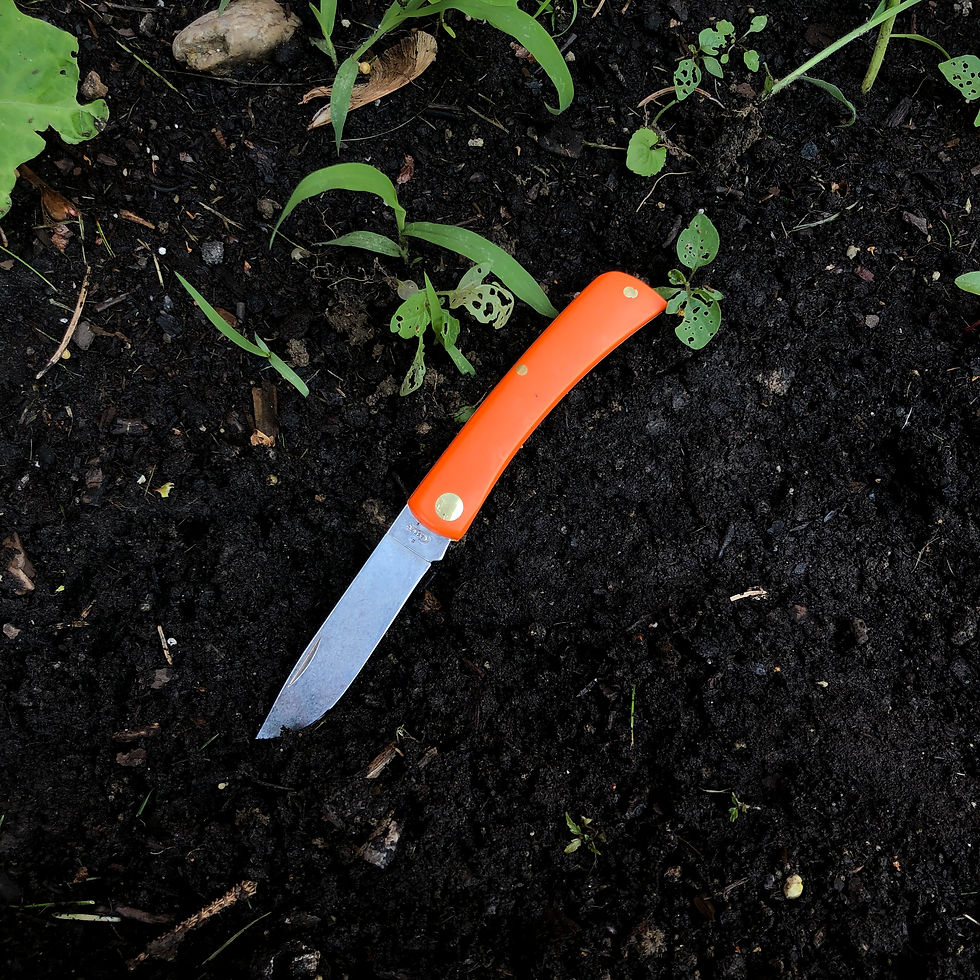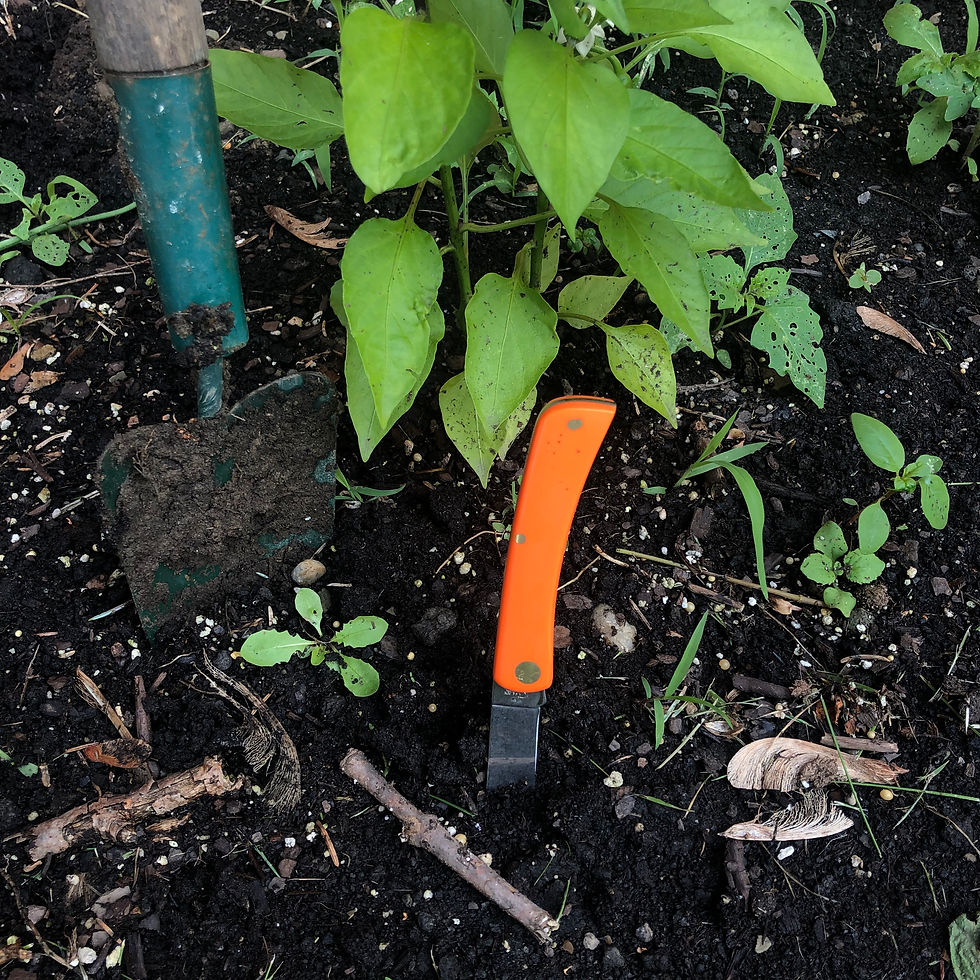Why the Case Sod Buster Jr. is an American Classic
- Knife Thoughts

- Aug 3, 2019
- 4 min read
W.R. Case & Sons, known colloquially as just Case, is a paragon in the world of knives and American manufacturing. With roots reaching back to 1889, they've been a major player in the knife industry basically throughout its history and growth. Situated in what was historically the hotbed of American knifemaking, Bradford, Pennsylvania is home to Case and its parent company Zippo. Case is known for its traditional knives, mostly non-locking slipjoints and classic fixed blades, but they've also ventured into the modern knife market recently, notably in their collaboration with Zac Brown's Southern Grind knife company. However, this article will focus on the former, a knife that couldn't get much more classic American, just like Case; the Sodbuster Junior.
The Sodbuster is a classic working knife, and Case's rendition is the quintessential example. Unlike most American traditional knives, the Sodbuster has no bolsters. It is what's called a shadow pattern, which is the name given to a knife without bolsters. It has a bird's eye pivot, wherein the pivot pin is peened into a metal collar, to ensure strength without a bolster. Although it's bolsterless, it does still have brass liners for rigidity. Sodbusters often have synthetic handles that offer strength without adding too much weight, like my example in orange delrin. Due to the lack of additional manufacturing steps required for bolsters and the common use of low cost materials, the Sodbuster is generally a lower cost knife than others including the vast majority of those in Case's product line. The low cost combined with the retained strength make for a great work knife.

The Sodbuster's design also lends itself to a wide range of utilitarian uses. The handle is a simple ergonomic design that allows for a full grip. If you read my other articles at Knife Thoughts or watch any of my video reviews, you'll know that I love a simple handle because it doesn't force your hand into any specific grip. The blade is also an extremely classic drop point, with a usable point but lots of belly and straight edge for both pull and push cuts. Case actually denotes the Sodbuster as having a skinner blade, and I think that must refer to its more abrupt belly in comparison to most drop points (also, it could refer to the German version of the Sodbuster pattern, which is called a butcher's pocket knife). A simple and easy to use handle combined with a blade well designed for general utility make the Sodbuster a good using knife.

As for the manufacturing quality of sodbusters, they're often far more than adequate as working knives, but slightly less highly finished and impeccably fitted as higher end knives. Mine has some gaps between the spring and liners, some slight imperfections in the handle shaping, a slight recurve to the edge, and a partially rounded tip. I hope that that doesn't sound too bad, though I always try to be fully honest in my reviews, because my Case Sodbuster Jr. is still a really great knife. The gaps and handle shaping have absolutely no practical effect, and the slight recurve and rounded tip were corrected quickly and easily with one sharpening (which is easy with Case's Tru Sharp stainless steel). As with any handmade tool, the Case Sodbuster can come with some nitpick-able issues, but that can even be a part of its appeal; it's unique, and you get the feeling that it's not just mass produced and soulless, but honestly made by hand.
I have been thoroughly enjoying this knife since Northern Knives graciously sent it my way. It has proven to be a tough worker that has been more than capable of everything I've asked of it. I have used it fishing, cooking, camping, gardening, and lots of regular EDC stuff like breaking down boxes and opening mail. So if you can look past a cosmetic imperfection or two (which should be easy considering the budget price tag), I think you'll find the Case Sodbuster Jr. makes for a great using knife whether for every day carry, outdoor recreation, or work!

Finally, you might be wondering; Why is it called a Sod Buster Jr.? Well, the Junior part is easy. Case also makes a larger version of this knife, with a ~4.6" handle and ~3.6" blade versus the Junior's ~3.6 handle and ~2.8" blade, hence this is the Junior version because it's smaller. The "Sodbuster" part is where it gets interesting. Apparently, "sodbuster" was a derogatory term used by the upper classes to refer to the people who worked the earth, like farmers. It was a term that came to prominence during the Dust Bowl of the 1930s, and it seems that is when this pattern was first given the "sodbuster" name. Case, presumably, decided to flip the connotation of the term and use it to mean hard working and utilitarian, and it seems to have stuck. However, this pattern and knives very similar to it were probably in manufacture and use for decades, at least, before the "sodbuster" term was applied to them. In fact, in a slightly dubious intellectual property move, Case trademarked the name "Sod Buster". Presumably, it was trademarked as two words to avoid the fact that the term "sodbuster" had been in use for years. So this is a knife with a long history, and the Sodbuster name is fitting for such a utilitarian pattern.
You can find both the full sized and junior versions of the Sodbuster at most Case dealers for around $30 each.
Check out some of Northern Knives Case Selection and other Vintage and Classic style knives















I believe Christian Bale’s’ detective character in the The Pale Blue Eye, (set in 1830’s) is using a full size Sod Buster early in the film as he finds a clue on the ground. Unusual choice as period pieces like that usually pick the Barlow, so it stuck out to me.